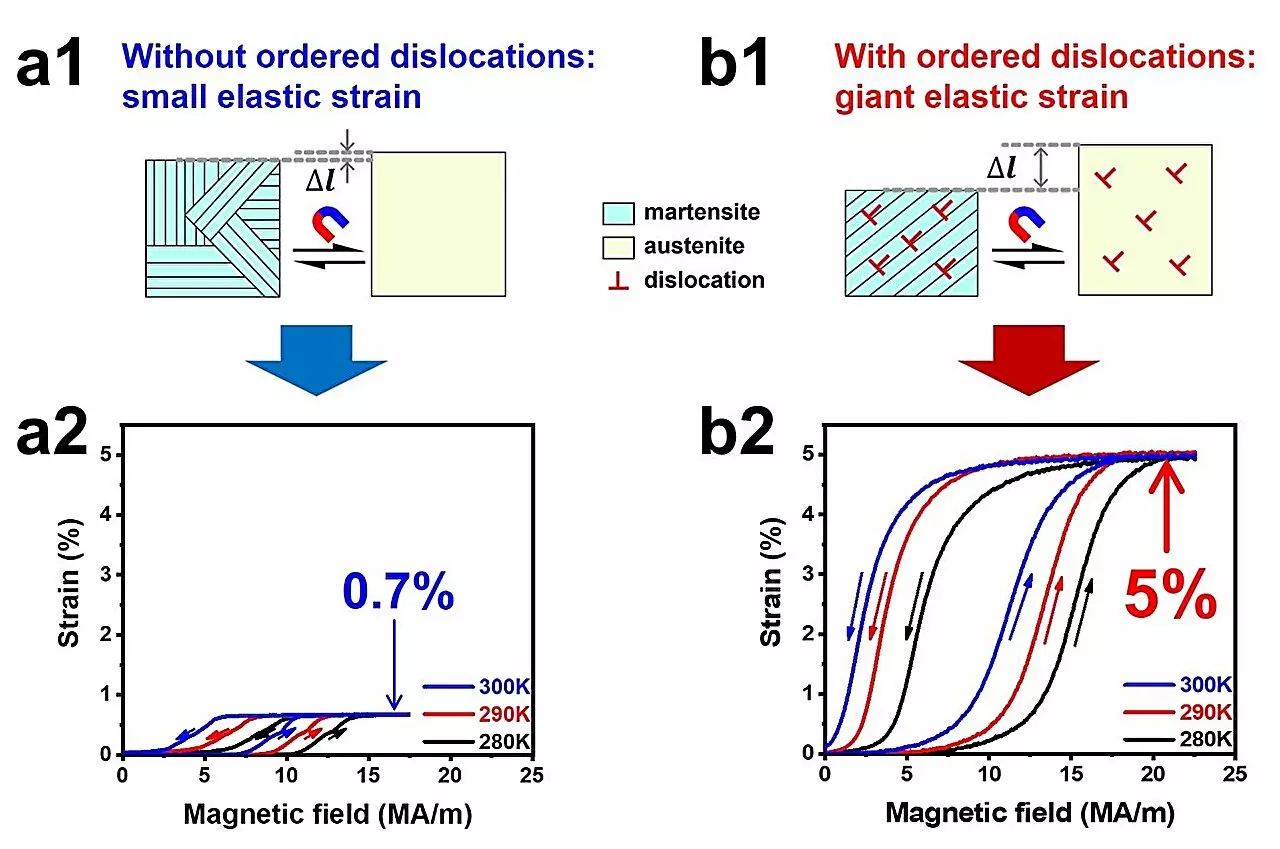In a groundbreaking discovery, a research group recently unveiled a significant advancement in materials science by achieving a giant magneto-superelasticity of 5% in a Ni34Co8Cu8Mn36Ga14 single crystal. This remarkable feat was made possible through the introduction of arrays of ordered dislocations, which facilitated the formation of preferentially oriented martensitic variants during the magnetically induced reverse martensitic transformation.
The Role of Elasticity in Materials
Elasticity, defined as the ability of materials to return to their original shape after deformation, is a fundamental property present in most metals, typically characterized by a strain of 0.2%. However, certain alloys such as shape memory and high entropy alloys exhibit superelasticity with strains of several percent, often triggered by external stresses. The emergence of magneto-superelasticity, which is induced by a magnetic field, has opened up new avenues for contactless material operation and the development of innovative stroke actuators and energy transducers.
Led by Prof. Jiang Chengbao and Prof. Wang Jingmin from the School of Materials Science and Engineering at Beihang University, in collaboration with the High Magnetic Field Laboratory at the Hefei Institutes of Physical Science of the Chinese Academy of Sciences, the research team conducted a stress-constrained transition cycling (SCTC) training on the Ni34Co8Cu8Mn36Ga14 single crystal. By subjecting the crystal to compressive stress, they introduced ordered dislocations with a specific orientation, which in turn influenced the formation of specific martensitic variants during the reversible transformation induced by a magnetic field.
Through phase field simulations, it was confirmed that the internal stress generated by the organized dislocations played a pivotal role in shaping these preferred martensitic variants. By combining the reversible martensitic transformation with the preferential orientation of the martensitic variants, the single crystal demonstrated a remarkable magneto-superelasticity of 5%. Furthermore, the research team designed a device utilizing a pulsed magnetic field with a pulse width of 10 ms, which showcased a substantial stroke at room temperature, courtesy of the giant magneto-superelasticity. The device exhibited a rapid response to an 8 ms pulse with a minimal delay of about 0.1 ms, highlighting its potential for various applications.
Prof. Wang emphasized, “Our work provides an attractive strategy to access high-performance functional materials through defect engineering.” The breakthrough in achieving giant magneto-superelasticity not only opens up new possibilities for the development of advanced materials but also underscores the critical role of defect engineering in enhancing material properties. This research paves the way for a new era of material science, where innovative techniques and strategies can unlock the full potential of materials in various applications.


Leave a Reply